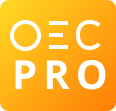Exports In 2022, Brazil exported $3.41M in Organo-Sulfur Compounds, making it the 40th largest exporter of Organo-Sulfur Compounds in the world. At the same year, Organo-Sulfur Compounds was the 755th most exported product in Brazil. The main destination of Organo-Sulfur Compounds exports from Brazil are: Argentina ($1.41M), Nigeria ($607k), Paraguay ($455k), Switzerland ($198k), and Indonesia ($184k).
The fastest growing export markets for Organo-Sulfur Compounds of Brazil between 2021 and 2022 were Switzerland ($196k), Denmark ($78.1k), and Indonesia ($35.1k).
Imports In 2022, Brazil imported $906M in Organo-Sulfur Compounds, becoming the 2nd largest importer of Organo-Sulfur Compounds in the world. At the same year, Organo-Sulfur Compounds was the 58th most imported product in Brazil. Brazil imports Organo-Sulfur Compounds primarily from: China ($403M), India ($144M), Japan ($65.8M), Singapore ($64.2M), and Belgium ($63.6M).
The fastest growing import markets in Organo-Sulfur Compounds for Brazil between 2021 and 2022 were China ($121M), Singapore ($47.8M), and India ($45.2M).
COMPANIES In 2023, leading companies such as JBS Foods (1) and Givaudan Fragrances (1) were at the forefront of shipping Organo-Sulfur Compounds from Brazil to the United States.

